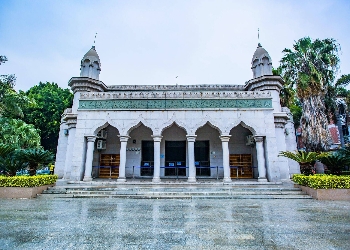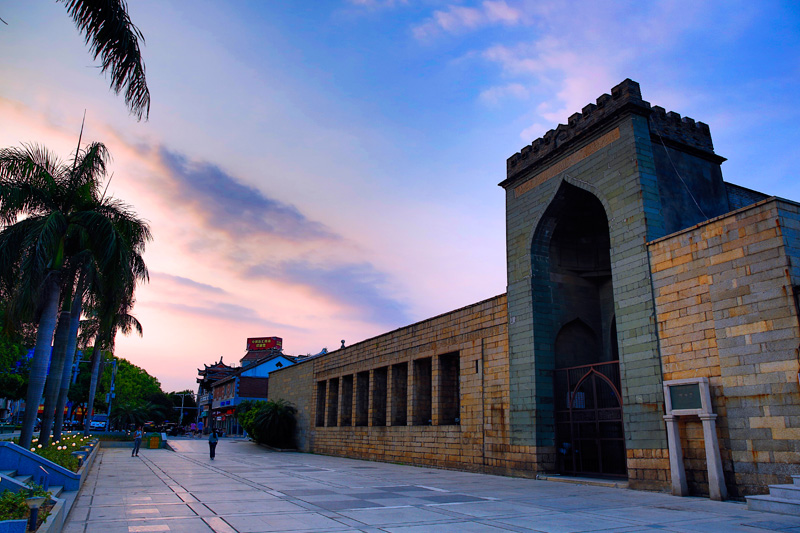South Putuo Temple
Chinese Name: Nan Pu Tuo Si(南普陀寺)
Location: No.515 Siming South Road, Siming District, Xiamen City, Fujian Province
Religious Status: One of the Buddhist resorts in southern Fujian
Year of the Initial Construction: Tang Dynasty
Treasure of the Temple: Lotus Sutra
Opening Time: Outer Gate: 3:00 ~ 20:00; Inner Gate: 3:00 ~ 18:00
Best Time to Visit: All year round
Recommended Visiting Time: 1 ~ 3 hours
Ticket Price: Free
South Putuo Temple was first built in the late Tang Dynasty, called Sizhou Temple(泗州寺), and was renamed Puzhao Temple(普照寺)during the Song Dynasty. In the early Ming Dynasty, the temple was barren and was not rebuilt until the Kangxi period of the Qing Dynasty. Because it enshrines Avalokitesvara Bodhisattva, it is similar to the Avalokitesvara Dojo on Mount Putuo in Zhejiang, and it is in the south of Mount Putuo, so named "South Putuo Temple". It is one of the Buddhist resorts in southern Fujian and one of the eight scenic spots in Xiamen.
The main buildings on the central axis of Nanputuo Temple include the Tianwang Hall, the Daxiong Hall, the Dabei Hall, and the Depository of Buddhist Sutras. There are bell and drum towers, Zen halls, guest halls, and Minnan Buddhist Academy. There is a square in front of Tianwang Hall, and a 30m quadrate Free Life Pond and a bigger lotus pool. The whole temple is magnificent and orderly. The Daxiong Hall is dedicated to the three saints of the West, the Dabei Hall is dedicated to Avalokitesvara. You can see all kinds of Buddhist cultural relics in the Depository of Buddhist Sutras.
One of the most valuable cultural relics in Nanputuo Temple is the blood book "Lotus Sutra" of the Ming Wanli period. This classic is written in blood and has high historical research value. In addition, Nanputuo Temple also has a collection of He Chaozong's famous work "white porcelain Guanyin".
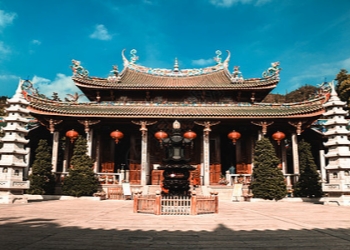
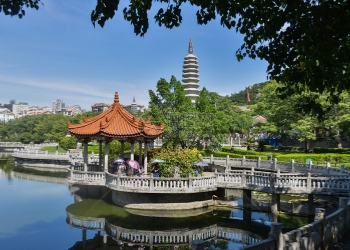
Heavenly Empress Palace (Tianhou Palace)
Chinese Name: Tian Hou Gong(天后宫)
Location: Tianhou Road, Quanzhou City, Fujian province
Religious Status: It is the oldest and highest ancient building in Mazu temples at home and abroad.
Year of the Initial Construction: 1196
Treasure of the Temple: Mazu Culture
Opening Time: 8:00-17:30
Best Time to Visit: April to November
Recommended Visiting Time: 2-3 hours
Ticket Price: Free
Heavenly Empress Palace in Quanzhou is an early and large-scale Mazu Temple on the southeast coast of my country. It is also an important visiting point in Quanzhou. After entering the Heavenly Empress Palace, you will find that although the Main Hall of it has experienced many vicissitudes, the wooden buildings of the Ming and Qing Dynasties are still well preserved, and the reliefs and carvings on the eaves are really beautiful. The east and west corridors are the exhibition rooms of the Museum of the History of Fujian and Taiwan Relations, which has a large collection of precious historical relics and folk relics. As the material carrier of Mazu belief culture, Heavenly Empress Palace in Quanzhou plays an important role in promoting cross-strait cultural exchanges.
The Heavenly Empress Palace is a temple building, so the architectural layout is centered on the Tianhou Hall with sacrificial functions and spreads forward and backward along the north-south direction, and there are bell and drum towers on both sides of the mountain gate. The Hall of Heavenly Empress Palace is large in scale and adopts the style of a porch courtyard. There is a gate hall in front of it, and the main hall dedicated to Mazu is behind the gate hall. The front of the hall and the stage form a space for sacrifice and performance in the Heavenly Empress Palace. The courtyard in front of the main hall is spacious, and there are two more private courtyards behind it. On both sides of the courtyard, it has ancillary buildings such as corridors and arbors.
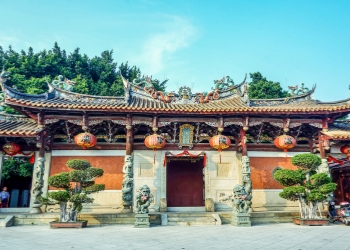
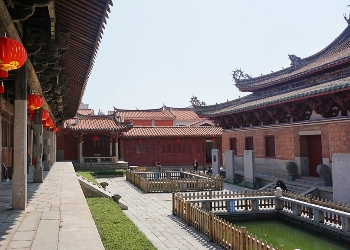
Kaiyuan Temple
Chinese Name:Kai Yuan Si(开元寺)
Location: No.176 Licheng District West Street, Quanzhou City, Fujian Province
Religious Status: Kaiyuan Temple has a history of more than 1,300 years. It is an important cultural relic in the southeast coast of China and the largest Buddhist temple in Fujian Province.
Year of the Initial Construction: Tang Dynasty (686)
Opening Time: 06:30-17:00
Best Time to Visit: All year round
Recommended Visiting Time: 2-3 hours
Ticket Price: Free
Scenic Spot Level: 4A
Kaiyuan Temple has a history of more than 1,300 years since its completion. It is an important cultural relic in the southeast coast of China and the largest Buddhist temple in Fujian Province. In 1982, Kaiyuan Temple was listed as the second batch of Major Historical and Cultural Site Protected at the National Level and a national 4A-level scenic spot.
Major buildings in Kaiyuan Temple include Tianwang Hall, Daxiong Palace, the Sweet Dew Temple, the Sutra Depository, and Gongde Tang, which retain the architectural characteristics of southern Fujian in the Tang, Song and Ming and Qing dynasties. Daxiong Palace was built in the Tang Dynasty, after the Tang, Southern Song, Yuan, and Ming disasters and reconstruction, the existing building is from the Ming Dynasty in 1637 relics. The building area of the Daxiong Palace is 1338 square meters, with a height of 20 meters. There are 86 large stone columns in the hall, known as the "hundred-column hall". In front of Kaiyuan Temple are two imposing stone towers, the east one is called Zhenguo Tower the west one is called Renshou Tower. They are located on the left and right of the central axis, leaving the characteristics of the layout of Buddhist temples in the Tang and Song dynasties.
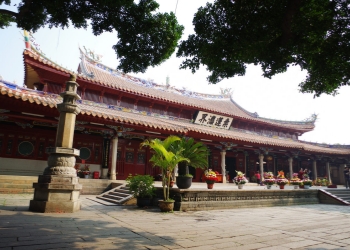
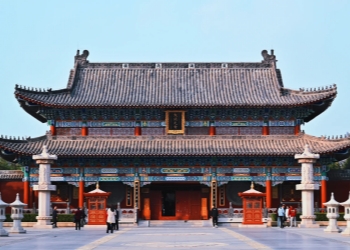
Yongquan Temple
Chinese Name: Yong Quan Si(涌泉寺)
Location: Drum Hill, Jin 'an District, Fuzhou City, Fujian province
Year of the Initial Construction: 783
Opening Time: 6:30-17:30
Best Time to Visit: Spring and Autumn
Recommended Visiting Time: 3 hours
Ticket Price: 6:30-17:30
Yongquan Temple is built on the side of Drum Hill (Gushan), covering an area of about 1.7 hectares, with Mount Xianglu in front and Mount Baiyun in the back. Yongquan Temple basically maintained the layout of the Ming Dynasty Jiajing years, the whole temple has 25 halls, with the Daxiong Hall as the center, rising layer by layer along the hillside terrain, forming a scattered and orderly temple complex.
When you walk into Yongquan Temple, the first thing you see is the most famous pair of "Thousand Buddha Pottery Pagodas". The pagodas are about 7 meters high, with octagons and nine floors. They are fired in layers of argil, then stacked. The color of the pagoda is tan and there are 1038 Buddha statues on the tower. In the center of the pool, a dripping Avalokitesvara is stepping on a lotus foot, the altar is filled with candles and flowers, the worshippers are in an endless stream, and the shelves and trees are hung with blessing brands.
There are Sakyamuni III Buddha in Han dress and eighteen Arhats in the temple. At the back of the hall, there is a "Three Holy Statues" weighing about 1.15 tons, and in front of them, there is a long table made of mulberry wood, which is said to be intact after many fires and is known as the treasure of the temple.
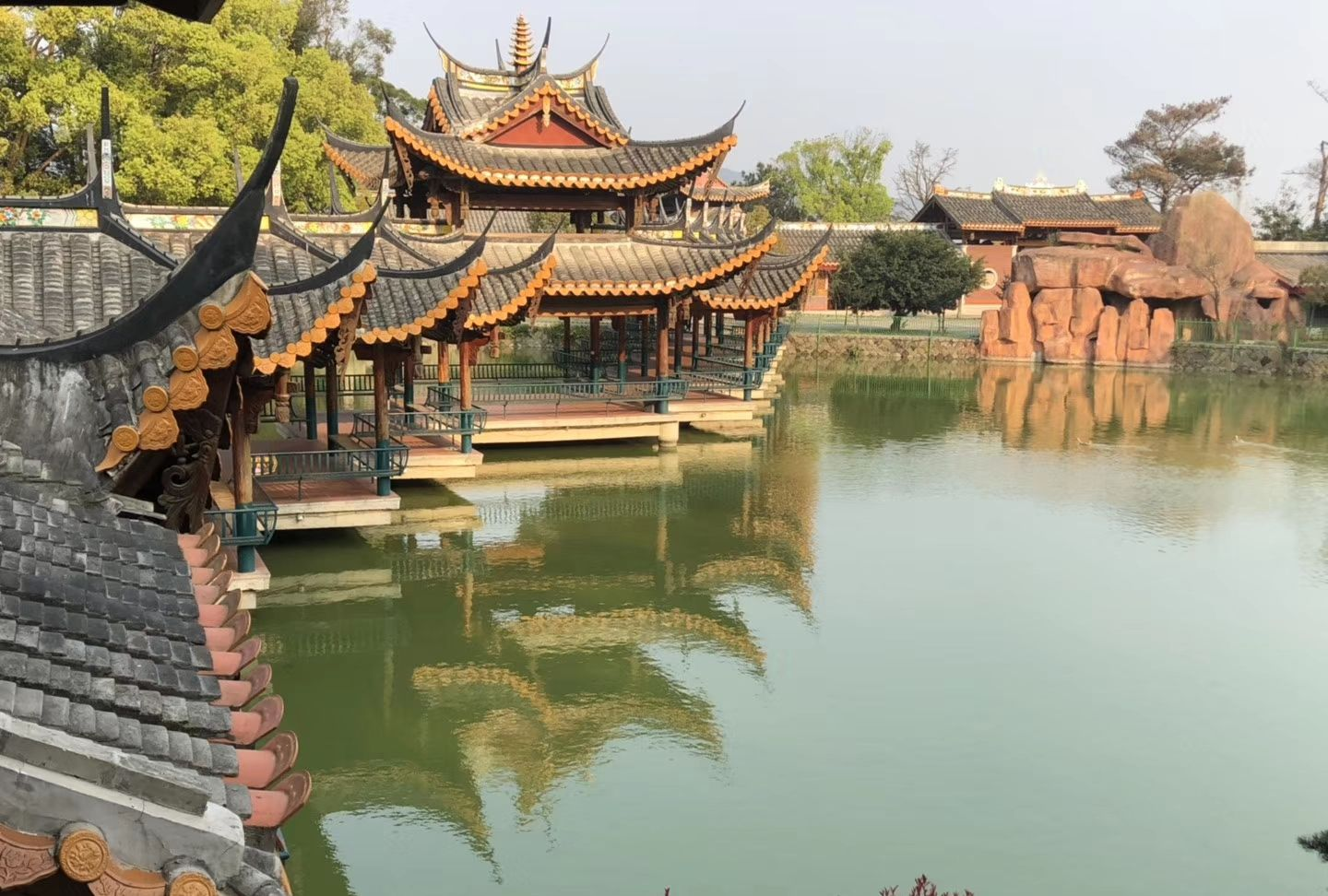
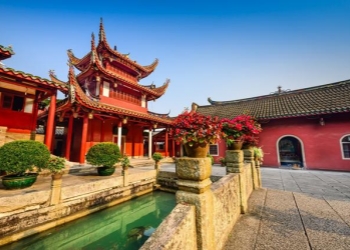
Emperor Guan Temple
Chinese Name: Guan Di Miao(关帝庙)
Location: Dongshan County, Zhangzhou City, Fujian Province
Year of the Initial Construction: Song Dynasty
Opening Time: 08:00-17:30
Ticket Price: Free
The Emperor Guan Temple, is located in the Wind-riven Rock, a National AAAA Scenic Spot, which sits at the foot of Hulou Mountain in Tongling Town of Dongshan County on the southeast coast. Listed aspart of the fourth batch of major cultural relics protected at the national level by the State Council in 1996. In its long history, Guandi Temple has prospered and abandoned several times. Most of the buildings we see so far were built in the Ming and Qing Dynasties, and they belong to beam-lifting wooden structure buildings.
With a total length of 40 meters, a width of 17 meters and a building area of 680 square meters, the Emperor Guan Temple is composed of four pillars horizontally and seven pillars vertically. Though not big in size, the temple is delicate and magnificent with most of the architectural art concentrated on the central axis, with a hierarchical order and a rigorous layout, composed of gateways (Prince Pavilion), front hall (worship), courtyard corridors, main hall and garden. And the paintings and carvings, either wooden, stone or cut porcelain, on the arch or along the beams, featuring flowers, birds, fish, animals orfictional and historical characters, have added to its brilliance and magnificence.
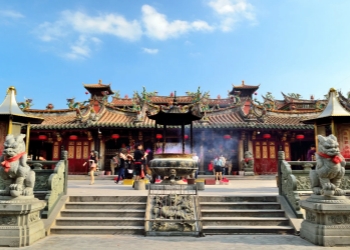
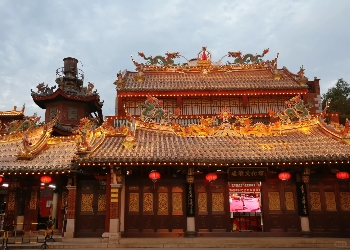
Qingjing Mosque
Chinese Name: Qing Jing Si(清净寺)
Location: Tumen Street, Licheng District, Quanzhou City, Fujian Province
Year of the Initial Construction: 1009
Opening Time: 09:00-17:15
Recommended Visiting Time: 1 hour
Ticket Price: CNY 3
It is an eye-opening place that shows the tolerance of Chinese towards other religions and ethnic groups.
Qingjing Mosque was built in the Northern Song Dynasty (1009), modeled after the Islamic church building in Damascus, Syria. It is one of the oldest surviving Islamic buildings in China. It is not only a precious heritage of Quanzhou's history and culture, but also a witness in the process of Sinicization of Islam.
Qingjing Mosque covers an area of 2184 square meters. The main remaining buildings are Gate Tower, worship halls, Ming Shantang, and other parts. In 1961, Qingjing Mosque was listed as one of the first batch of Major Historical and Cultural Site Protected at the National Level. In the 1990s, it was listed as the only Islamic mosque selected among the "Top Ten Famous Temples in China".
In the temple, there is a "Mingshan Hall" built in the Ming Dynasty, which is typical of ancient folk buildings in southern Fujian, and more clearly shows the course of the transformation of mosque architecture into Chinese local architectural style. In front of the Mingshan Hall, there is a fine carved incense burner with a blooming lotus on the top, surrounded by small lotus and lotus seeds. The lotus symbolizes purity and elegance in Chinese culture, cleverly interpreting the spiritual concept of "purity" advocated by Islam.
Visiting Qingjing Mosque, while enjoying the beautiful scenery, you can feel the edification and baptism of religious culture, which is a journey to enrich yourself.
